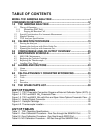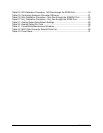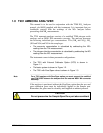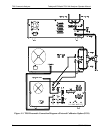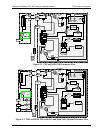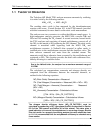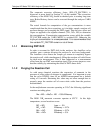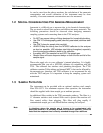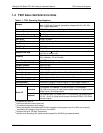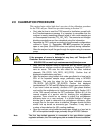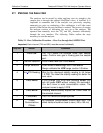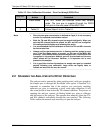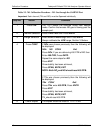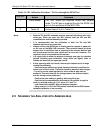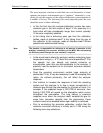
Teledyne API Model T201 NH
3
Analyzer Operator Manual T201 Ammonia Analyzer
07271B DCN6646 13
1.4 T201 ANALYZER SPECIFICATIONS
Table 1-1. T201 Operating Specifications
Ranges
Min: 0-50 ppb Full scale
Max: 0-2000 ppb Full scale (selectable, independent NH
3
, NO, NO
2
,
NOx ranges supported)
Measurement Units
PPB, PPM, microgram/m
3
, milligram/m
3
(user selectable)
Noise at Zero
1
<
0.5 ppb RMS
Noise at Span
1
<
1.0% of reading above 50 ppb
Lower Detectable Limit
2
1 ppb RMS
Zero Drift
3, 6
2 ppb / 24 hours
Span Drift
6
<
1.0% FS Range / 24 hours
Lag Time
40 seconds
Rise Time
4
90% 300 seconds
Fall Time
4
90% 300 seconds
Sample Flow Rate
1000 cm
3
/min + 10% (500 cm
3
/min bypass to vacuum manifold, 500
cm
3
/min to reaction cell)
Linearity
NO calibration 1% of full scale
NH
3
calibration 2% of full scale
Temp Range
15-40
o
C
Dimensions H x W x D
7” x 17” x 23.6” (18cm x 43cm x 61cm)
Weight, Analyzer
43 lbs (20 kg)
Weight, Converter
24 lbs (11 kg)
Weight, Pump
16 lbs (7 kg)
Power, Analyzer
100V ~50/60 Hz, 120V ~60 Hz, 220V ~50Hz, 240V ~50 Hz, 125 watts
Power, Analyzer
5
230V ~50 Hz, 125 watts
Power, Pump
110V ~60 Hz, 220V ~50 Hz, 240V ~50 Hz, 295 watts
Power, Pump CE Mark
5
230 V ~50 Hz, 2.5 A peak
Environmental
Installation Category Pollution Degree 2, Over-voltage Category II
Analog Output Resolution
1 part in 4096 of selected full-scale voltage (12 bit)
standard
(1) Ethernet: 10/100Base-T; (2) RS-232 (300 – 115,200 baud)
(2) USB device ports; (8) opto-isolated digital outputs; (6) opto-isolated
digital inputs; (4) analog outputs
Serial I/O
optional
(1) USB com port; (1) RS485 (300 – 115,200 baud); (8) analog inputs
(0-10V, 12-bit); (4) digital alarm outputs; Multidrop RS232; (3) 4-20mA
current outputs
1
As defined by USEPA
2
Defined as twice the zero noise level
3
At constant temperature and voltage
4
When pneumatics are conditioned with NH
3
overnight and the gases (zero air to NH
3
) are manually
switched at the sample inlet at the rear of the M501.
5
Electrical rating for CE Mark Compliance
6
Applies when sampling NH
3
; better results expected for NO/NOx gas measurements.



